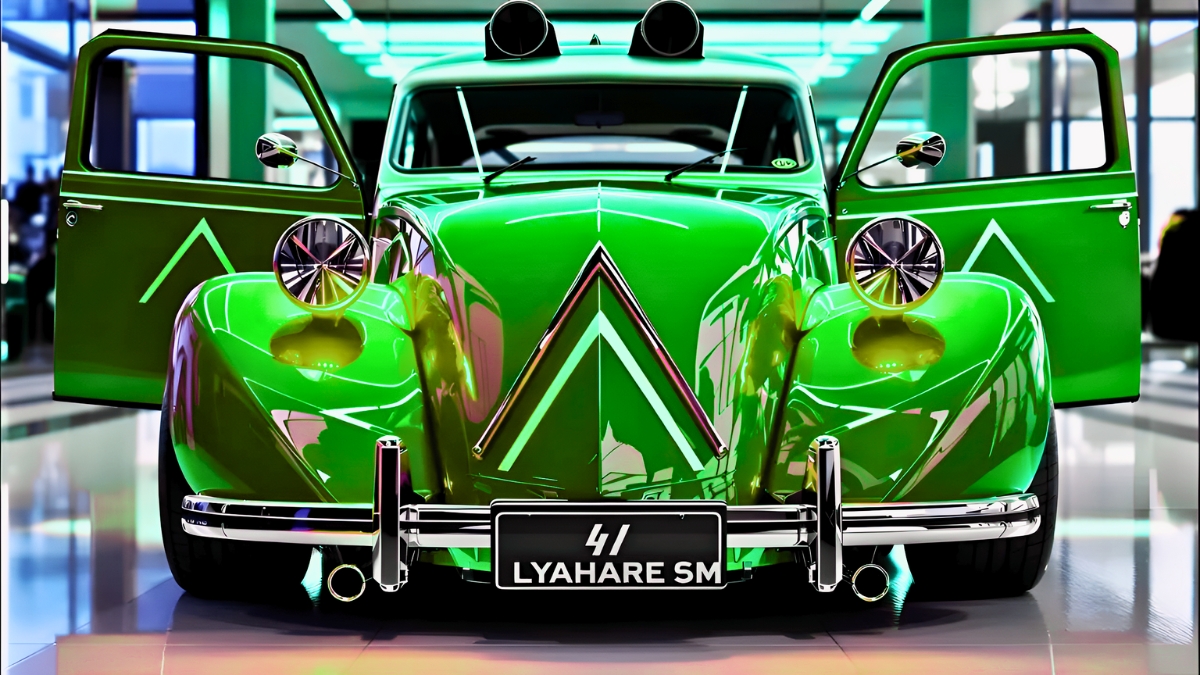Join on WhatsApp
Get the latest updates directly on WhatsApp – motivation, news & more!
The 1961 Citroën 2CV Sahara isn’t just any classic car it’s a legendary off-road icon. With a dual-engine setup and 4×4 capability, this ultra-rare vehicle was built for rugged terrain long before SUVs became mainstream. Whether you’re a car enthusiast or simply love unique automotive stories, the 2CV Sahara is a fascinating piece of history.
Let’s dive into what makes it so special, how it works, and why collectors still obsess over it today.
What Exactly Is the 1961 Citroën 2CV Sahara?
The Citroën 2CV Sahara was a modified version of the regular 2CV designed to handle rough, sandy, and rocky landscapes. What makes it stand out is its dual-engine system: one engine powers the front wheels, and the other powers the rear. This setup effectively made it a full 4×4 long before off-road cars became popular.
Only about 694 units were ever produced between 1960 and 1967, making it extremely rare today. It was designed for French military use and adventurous drivers who needed a reliable car that could tackle deserts, mountains, and muddy roads.
How the Dual-Engine System Works – Explained Simply
Here’s the cool part: the Sahara’s two engines aren’t connected like in a traditional 4×4. Each engine has its own gearbox.
| Feature | Front Engine | Rear Engine | Combined 4×4 System |
|---|---|---|---|
| Engine Type | 425 cc flat-twin | 425 cc flat-twin | Both engines drive respective axles independently |
| Transmission | 4-speed manual | 4-speed manual | Coordinated by driver using separate clutches |
| Drive | Front wheels | Rear wheels | True 4×4 for extreme terrain |
The driver can engage either engine separately or both at once for maximum traction. This setup allowed the Sahara to tackle sand, snow, mud, and hills that regular 2CVs couldn’t handle.
Why the 2CV Sahara Was Built
Citroën wanted a lightweight, versatile, all-terrain vehicle for both military and civilian use. The idea was simple: make a car that could go anywhere, carry a few passengers and some cargo, and survive harsh conditions without complex mechanical systems.
The dual-engine approach was a clever, practical solution for the time. Instead of designing a conventional four-wheel-drive system, Citroën simply put two small engines in one vehicle. It’s a perfect example of innovative French engineering in the 1960s.
Where You Might See One Today
Since only a few hundred were made, spotting a 2CV Sahara in the wild is rare. Most of the surviving models are owned by collectors or displayed in museums. Some adventurous enthusiasts even take them on off-road rallies or classic car events.
Auctions and vintage car shows are the best places to see these beauties in action. Prices today can range from $50,000 to over $100,000, depending on condition and originality.
Best Tips for Collectors and Enthusiasts
If you’re thinking of owning or restoring a 2CV Sahara, here are some quick tips:
- Check both engines carefully – both must work independently.
- Original parts are rare – source them from specialist suppliers.
- Rust is the main enemy – inspect the chassis and underbody.
- Learn the driving technique – managing two engines requires practice.
Owning a 2CV Sahara isn’t just about driving it’s about preserving a piece of automotive history.
How the 2CV Sahara Changed Off-Road Cars Forever
The Sahara proved that small cars could tackle extreme conditions, inspiring later off-road innovations. While today’s 4x4s are far more sophisticated, the Sahara remains a symbol of simplicity, ingenuity, and adventure.
Collectors value it not only for its rarity but also for its story a humble car that conquered deserts and mountains without fuss.
Conclusion
The 1961 Citroën 2CV Sahara is more than a car; it’s a testament to clever engineering and bold design. With its dual engines and all-terrain capability, it remains one of the most remarkable classics ever built.
Whether you’re a car enthusiast, collector, or history buff, the 2CV Sahara offers a fascinating glimpse into the past and reminds us that sometimes, simple ideas can lead to legendary innovations.
FAQs: 1961 Citroën 2CV Sahara
What makes the 2CV Sahara different from a regular 2CV?
It has two engines and a 4×4 setup, allowing it to drive over rough terrain that normal 2CVs can’t handle.
When was the 2CV Sahara produced?
Production ran from 1960 to 1967, with only 694 units ever made.
Why did Citroën use two engines?
To create a simple, reliable 4×4 system without complicated mechanical linkages, ideal for military and off-road use.
How much is a 2CV Sahara worth today?
Prices range from $50,000 to over $100,000 depending on condition, originality, and history.
Can the Sahara handle modern off-road conditions?
Yes, for light to moderate off-road driving, but it’s more suited for vintage rallies and classic car events than extreme modern trails.
